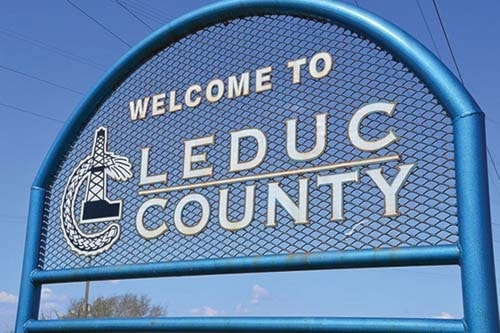Leduc County councillors have expressed apprehension the Capital Region Board (CRB) Growth Plan 2.0 is progressing in a manner that will cater more to the urban areas and City of Edmonton, leaving rural people and agriculture vulnerable to mismanaged growth and urban sprawl.
Capital Region Board CEO Malcolm Bruce met with council on May 24 to give an update on how Growth Plan 2.0 is moving along and answer councillor’s questions.
Bruce explained to council the document, whose initial draft was released March 24, 2016, remains a work in progress. “It’s really a regional policy level document. It’s about managing growth properly,” he added.
On April 13, 2016 a task force had its first opportunity to review the draft plan and policies. The task force met again on May 16 to continue discussions to finalize the Edmonton Metropolitan Regional Structure Map, the Densification and Intensification Targets and the Implementation Plan.
As the CRB continues its project of updating the plan for long-term growth in the Edmonton Metropolitan Area, five information sessions open to the public are being held in June; including one in Leduc County on June 16 at the Nisku Recreation Centre. Leduc County council’s feedback, along with 23 other municipalities, will be assembled into a briefing document and provided to the CRB in advance of its July 14 discussion of the Growth Plan 2.0.
“This is a 30 year plan,” said Bruce. He expects the region to grow by 450,000 new jobs and 1 million people over the next 30 years.
Bruce says the plan itself is about trying to shape the conditions of growth and economic development of the region.
The plan is divided into three tiers, says Bruce. The first is the metropolitan Edmonton core area, the second is the metropolitan area and the third is rural areas.
Agriculture and employment policies are new with the plan and a greater significance is being place on the importance of agricultural land to economic growth and sustainability.
Bruce explained the Growth Plan 2.0 is not suggesting growth in the past has been irresponsible but added if the region continues growing on the same structure as in the past 756 quarter sections of primary farmland will be taken for other uses.
The CRB is encouraging rural growth of two main forms; growth of hamlets and filling in areas already zoned country residential. Bruce told council there are 71,000 in the region with only 28,000 absorbed. This policy direction is to help curb the fragmentation of agricultural land.
“You have significant amounts of unabsorbed country residential land. How much do you want or how much do you need,” said Bruce.
Growth Plan 2.0, as it sits now, stipulates no new towns can be created in the region. The CRB prefers people move to areas with established infrastructure. “Rather than build new, fill your density levels,” said Bruce.
“I’m tired of being a land bank because we should still be able to grow. If there’s restrictions on rural people then I’ve got an issue,” said Coun. John Schonewille. He added he does not mind higher density areas but opportunities for services need to be available.
“I feel like this is a really city-centered growth plan,” added Coun. Tanni Doblanko.
Coun. Rick Smith feels the City of Edmonton and the CRB say they will work to protect agricultural land but do not follow through. “We’re looking at sustainability. Food is as important as a road through Edmonton.”
Smith also asked if the Enoch Cree Nation was involved in the process.
According to Bruce, the band is not being consulted but the plan will provide opportunities for conversation and collaboration. “I think on Aboriginals we’re not as far as we need to be but at least we’re starting.”
“It’s an imperialistic way of imposing land use on people,” said Smith.
The region contains 37 per cent of Alberta’s class 1 soil and Coun. Audrey Kelto is concerned if agricultural land is turned over to the metropolitan area the prime soil will be lost. “To me it’s absolutely black gold and it’s gone once it’s paved over.”
County mayor John Whaley used the time to voice the frustrations he has with the City of Edmonton and the ongoing annexation process, despite the CRB having no jurisdiction when it comes to annexations.
“Ultimately the currency for growth in the region is land. They haven’t been pressured hard enough to change that,” said Bruce.
